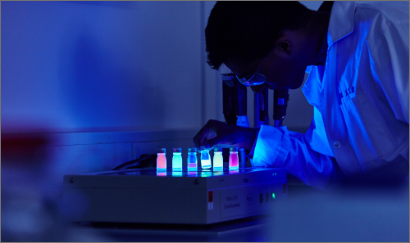
It is World’s Alzheimer’s Day today.
Professor Andrew Doig and Dr. Farid Khan discuss how clinical data and biomarker data can be combined using machine learning to diagnose early stages of Alzheimer’s Disease. See the Guardian Article out today.
Molecular and cellular changes to the brain are known to start decades before symptoms are apparent. One of these first steps is the over-production and deposition of the amyloid-beta peptide in the brain. We are currently focused on advancing an amyloid-beta-an oral drug candidate, PK051, that can break up deposits of amyloid-beta.
Various forms of dementia Dementia is the end result of many different diseases, such as Lewy body dementia, Parkinson’s and, most importantly, AD. By differentiating these, we can give the right treatments to the right patients. Memory tests, brain scans or analysing cerebrospinal fluid from a painful lumbar puncture struggle to differentiate between these forms of dementia.
Measuring biomarkers and patient information
Our novel dementia diagnostic measures levels of various biomarker proteins in blood, including amyloid-beta and forms of Tau, a second key protein in the progression of AD. Measuring just one or two of these biomarkers is inadequate for diagnosis.
However, when multiple measurements are combined with patient information — such as age, sex, ethnicity and genetics — using artificial intelligence (AI), we can accurately distinguish between different types of dementia and determine the severity of the disease. All that is needed is a drop of blood from a fingerpick.
Determining appropriate treatment and dosage AI can also identify which biomarkers are most important for diagnosis. If we know what the culprits of the disease are, we can precisely target the disease with the right drug and dosage. This would enable large cost reductions for health providers and eliminate the need for invasive procedures, such as cerebrospinal fluid collection, to determine appropriate treatment.
We now know that it is crucial to look at a range of proteins on red blood cells to give an accurate Alzheimer’s diagnostic. If we do this, we may be able to use the new drugs that are now becoming available to head off dementia before it even starts.
“The results from the biomarker study indicate that it is not only possible to differentiate patients based on Amyloid positivity but also on the level of disease severity,” says Dr Bob Smith, Clinical Director of PharmaKure. AI-generated algorithms can be used as a ‘MOT test’ every five years from our 40s to monitor these biomarkers and treat patients in the early stages of the disease.














